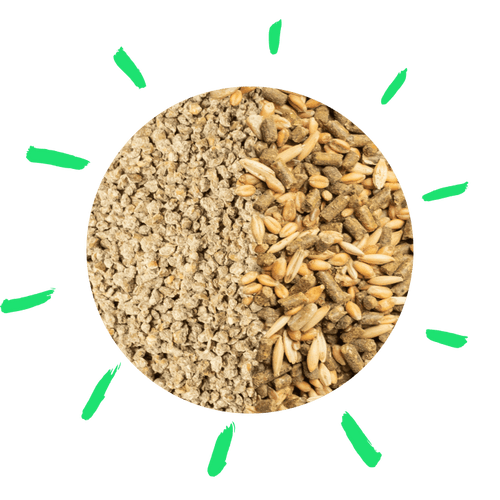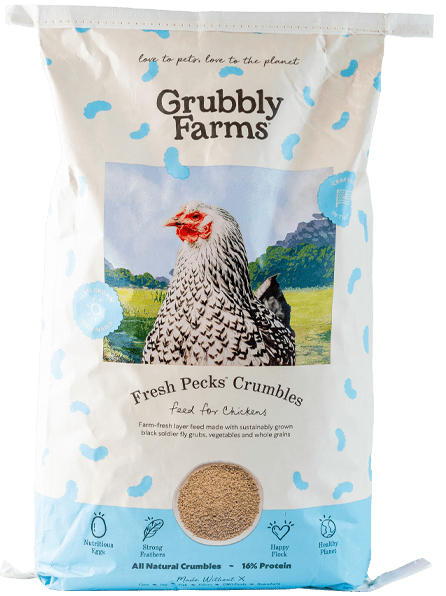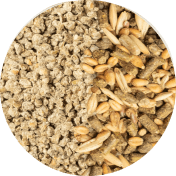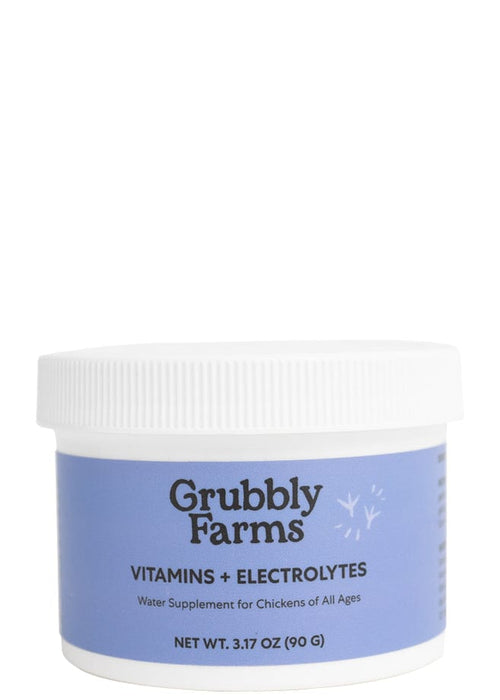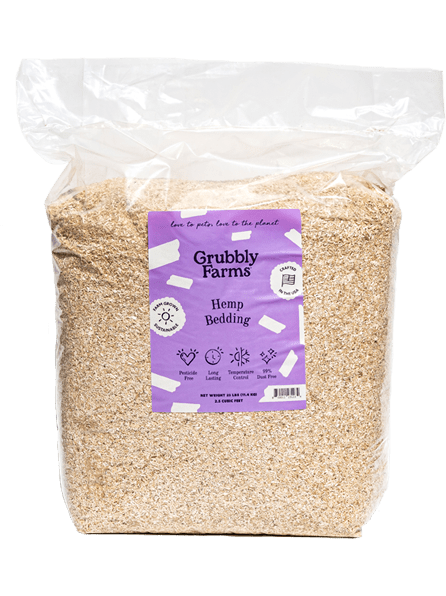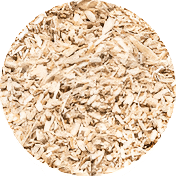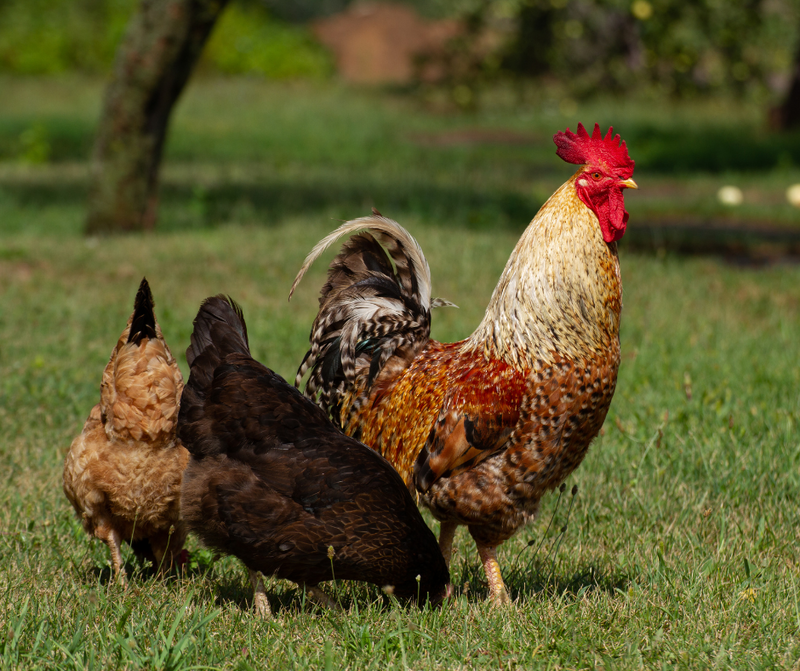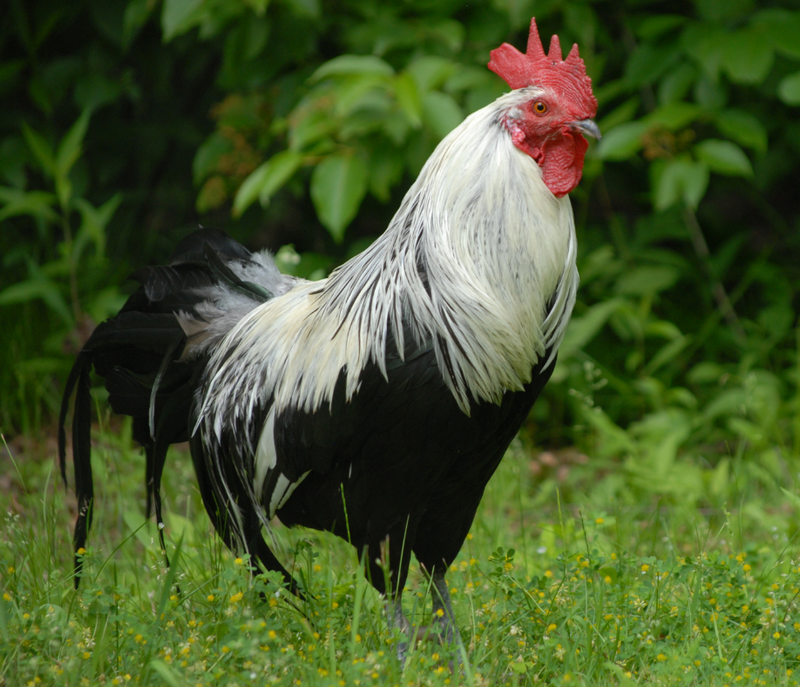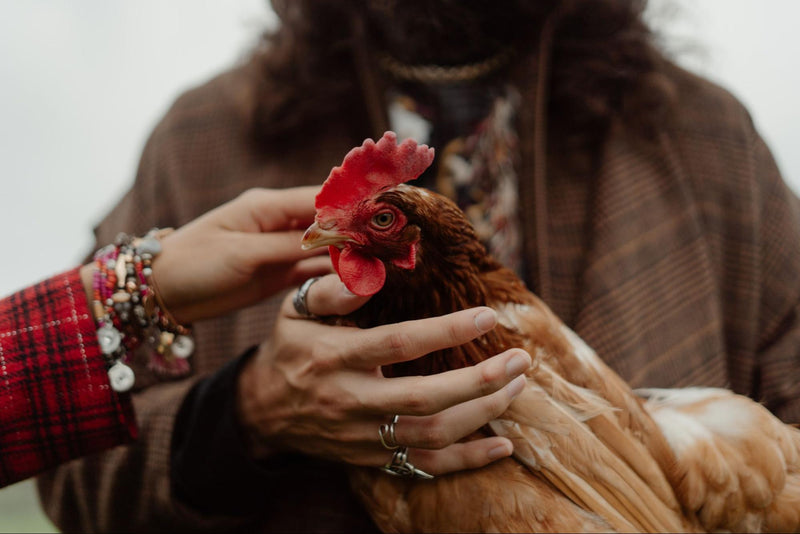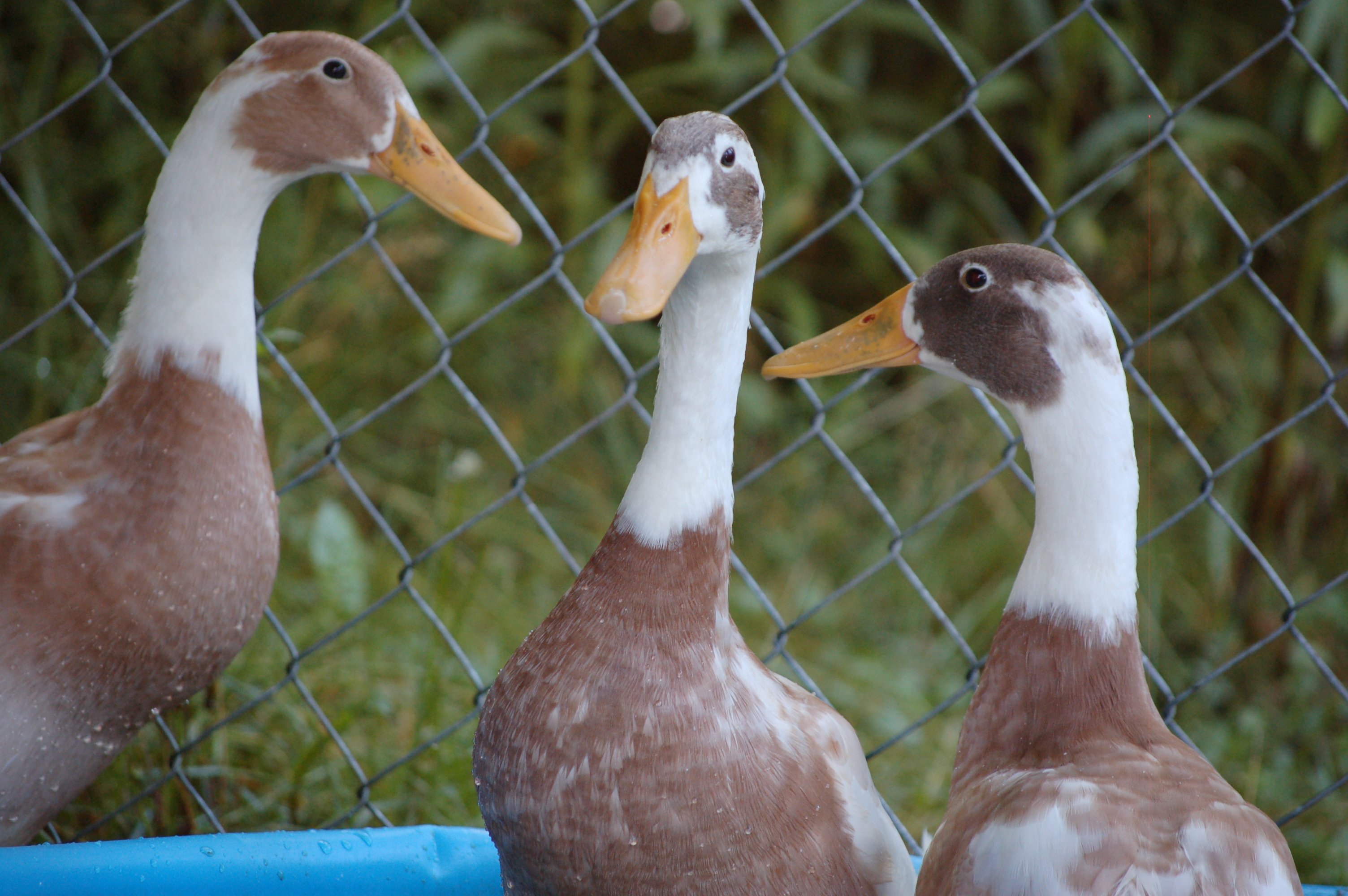There are countless breeds of roosters to choose from when looking for the perfect cock for your backyard flock! However, there are no specific rooster ‘breeds.’ Every chicken breed will have hens and roosters and the only difference is the gender. A rooster is simply a male chicken (also known as a ‘cock’).
If you want to add a rooster to your backyard flock, consider the following before picking your first rooster.
Benefits of Having a Rooster in Your Backyard Flock

Hens lay eggs for you to nourish yourself and your family... but what do roosters do? Why would you want to add a rooster to your backyard flock? A rooster has three main roles within the flock:
-
Flock breeding
-
Flock protection
-
Help maintain a flock pecking order
If you want to breed your backyard flock or if you want to get fertile eggs for hatching, you will need to add a rooster to your flock! In general, it is a good idea to have at least 10 hens per 1 rooster. If you have multiple roosters in your flock, you will need to make sure there are enough hens for each rooster to have his own ‘mini flock’.
Roosters also help protect the group. Protective roosters will constantly be on guard for danger or potential threats to his flock. He can be a great alarm system when danger is near and will even risk his own life to save his flock from predators. Roosters can be very helpful if you let your flock free-range daily.
Lastly, a rooster helps keep the peace amongst the hens in the flock. A rooster is outside of the hens’ pecking order, so if two of the hens decide to get in a squabble, a rooster will often step in to break up the fight before anyone gets hurt. Roosters are also helpful when you are integrating new chickens into your flock. They are more accepting of new hens and will usually prevent them being overly bullied by the other hens.
Rooster Breeding Q&A’s

Interested in breeding your backyard flock? Here are some common breeding questions we frequently receive:
Can a rooster fertilize all breeds of chickens?
Yes, most roosters can fertilize any hen that they are physically able to mate with. You will need to consider size when choosing a rooster to breed with your hens. Large-breed roosters can be rough on small-breed hens since the act of mating requires that the rooster mounts a hen’s back. Likewise, a small rooster will find it difficult to mate with a large hen. Keep in mind that sometimes crossbreeding (breeding hens and roosters of different breeds) can affect fertility rates or hatch rates depending on each breed’s genetic makeup.
Can I keep a rooster with different breeds of hens?
Yes! You can keep a rooster with a mixed flock of hens that are from different chicken breeds. Just keep in mind the rooster-to-hen size tips mentioned above if you are planning to breed your rooster with your hens.
Do I need a rooster for my hens to lay eggs?
No, a rooster is not needed in order for hens to lay eggs. However, a rooster is needed if you want to get fertilized eggs. However, just because you have a rooster in your flock does not mean you can’t eat the fertilized eggs. Even if an egg has been fertilized it needs at least 24 hours in specific incubating conditions in order for any embryo development to start.
Will a rooster fertilize eggs all year round?
Yes, in most cases a rooster can fertilize eggs all year round. A rooster can mate with his hens all year round, but reproductive activity will increase during late winter and early spring. Even though a rooster will mate with hens all year round, that does not always mean the eggs will be fertile. Weather patterns, overall health, and diet can all affect the fertility of both a rooster and his hens.
Now let’s take a look at some of the best chicken breeds when adding a rooster to your backyard flock!
Colorful Rooster Breeds
#1. Wheaten Ameraucana
Wheaten Ameraucana roosters are known to be docile when they are handled a lot from a young age. They make good flock protectors and are cold hardy since they have short pea combs and no wattles. A standard wheaten Ameraucana cock will weigh about 6.5 lbs. when he is fully mature. Ameraucana chickens also come in the following varieties: black, blue, blue wheaten, brown red, buff, silver, wheaten, and white.
#2. Spangled Orloff
Spangled Orloff roosters are known to have calm and laid-back temperaments. They are also a cold hardy breed with small combs and no wattles. A standard spangled Orloff rooster will weigh around 8 lbs. when mature. Orloff chickens can be found in the following varieties: black-tailed red, spangled, and white.
#3. Welsummer
Like Ameraucana roosters, Welsummer roosters can also have a friendly and docile personality when they are handled frequently as they are maturing. Welsummer roosters are good flock protectors since they are naturally alert and aware of their surroundings. They are great foragers and have calm temperaments. A full grown Welsummer rooster will weigh around 7 lbs.
Welsummers are only bred to one variety. A Welsummer rooster will have head feathers, hackle feathers, back, and tail feathers that are a rich golden brown to reddish brown color. Their breast and body feathers contrast nicely as a deep black color with red mottling. The tail feathers of a Welsummer cock are also black with some nice brown edging. The wings are a reddish brown with black highlights. Welsummers are white-skinned and red-faced.
White Rooster Breeds

Even though colorful roosters may catch the eye, roosters with more subtle looks are often just as stunning! Add a bright, contrasting splash to your backyard flock with these traditionally white feathered roosters.
White varieties will give you white roosters, but there are also some other white-based varieties that will give you roosters who are mostly white with some silver, gold, or black accents. When looking for a light-colored rooster, look for these varieties: white, light, silver spangled, Columbian, or porcelain.
Here are some chicken breeds that are known to have all-white or light-colored roosters!
#4. White Orpington
White Orpington roosters are known to have friendly and calm temperaments. They are a very laid-back breed suited well for small backyard flocks. Since they are a large breed rooster, a single Orpington cock won’t need as many hens as light breed roosters. Orpington roosters are also very cold hardy given their large size and abundant feathers. A mature Orpington rooster will weigh around 10 lbs. Orpingtons can be found in the following varieties: black, blue, buff, and white.
#5. White Leghorn
White Leghorn roosters are very active and alert. Despite those characteristics, these roosters are often friendly to people but can be a little assertive towards the hens. Leghorns are excellent foragers with the cocks reaching a mature weight of only around 6 lbs. Leghorns can also be found in the following varieties: barred, black, black-tailed red, blue, buff, buff Columbian, Columbian, dark brown, Dominique, exchequer, golden, light brown, mille fleur, red, silver, and white.
#6. White Plymouth Rock
White Plymouth Rock roosters are large birds with friendly, laid-back personalities. The roosters are often docile and make good flock protectors. Plymouth Rocks are a good dual-purpose, cold hardy breed for backyard flocks. Adult Plymouth Rock cocks weigh around 9.5 lbs. when fully grown and can be found in the following varieties: barred, black, blue, buff, Columbian, partridge, silver penciled, and white.
Large Rooster Breeds
In general, the roosters in any given chicken breed will be slightly bigger than hens. In large chicken breeds, the roosters can reach massive weights and heights! Having a large rooster in your backyard flock can be so much fun, however you will also need to make sure your coop is set up to accommodate a large bird. You will need to make sure your coop has plenty of space, a big enough chicken door, and low roosts.
Large breed roosters often take a while to mature into their full-grown weight and size. Large breed roosters will eat more feed and often benefit from supplemental protein in their diet.
Here are some large breed chickens that will provide you with large roosters!
#7. Cochin
Cochin roosters are large roosters with friendly and docile dispositions. They are best known for their prolific, fluffy feathers. Cochin roosters adapt well to both free-range conditions and confinement. They are very cold hardy and have laid-back personalities. An adult Cochin rooster can get up to a whopping 11 lbs.! You will need to make sure you have plenty of coop space and low roosts for your Cochin rooster. Cochins can be found in the following varieties: barred, birchen, black, black-tailed red, blue, brown, brown-red, buff, buff Columbian, Columbian, golden laced, lemon blue, mottled, partridge, red, silver laced, silver penciled, and white.
#8. Brahma
Brahma roosters are one of the largest roosters you can get in terms of size and weight! These big birds can reach up to 12 lbs. when they are fully mature. Despite their size, Brahma roosters adapt well to confinement as long as they are given enough space and access to the outdoors. Make sure the roosts are low enough for a big Brahma rooster to get up on at night. Brahma roosters have friendly and calm personalities with alert and mellow dispositions. Brahma chicken are very cold hardy and can be found these varieties: black, buff, dark, light, and white.
#9. Jersey Giant
A Jersey Giant rooster is the largest rooster you could get! These giants are massively built reaching a mature weight of almost 13 lbs. They are very cold hardy and have calm, docile personalities. Given their large size, Jersey Giant roosters are not known to be very active. These large roosters will need plenty of coop space and very low roosts. Jersey Giants can be found in the black variety or the white variety.
3 Bantam Rooster Breeds

On the opposite end of the size spectrum, you may be interested in adding a bantam rooster to your backyard flock! Bantams are miniature chickens that can be a quarter to two-thirds smaller than a standard size chicken. Many large fowl chicken breeds have bantam counterparts that are simply smaller in size. True bantams have no large fowl counterpart.
Since bantams are miniature chickens, they don’t need as much space as standard size chickens. However, if you are adding a bantam chicken to a standard size flock, you will want to make sure the bantam doesn’t get bullied by the larger chickens. Many times, bantams have big personalities and will get along fine with chickens that are larger than themselves! You will also want to make sure that the shorter bantams can still reach the food and water in the coop.
Here are some bantam chickens that will provide fun miniature roosters for your backyard flock!
#10. Old English Game Bantam
Old English Game Bantam roosters come from a cock-fighting background, but they can still make a feisty and entertaining addition to your backyard. It is best to just have a single Old English Game Bantam cock with your flock given the roosters’ inclinations to fight each other. Despite their small size, these little roosters can often hold their own amongst larger chickens.
They are an active breed that prefers free-range conditions, can forage for a majority of their own food, and are noisy protectors! A full-grown Old English Game cock will weigh around 24 oz. These bantams also have a large fowl counterpart, in which the adult cocks weigh around 5 lbs.
Old English Game Bantams come in the following varieties: barred, birchen, black, black-breasted red, black-tailed red, black-tailed white, blue, blue brassy black, blue-breasted red, blue golden duckwing, blue silver duckwing, blue wheaten, brassy black, brown red, buff, Columbian, crele, cuckoo, fawn silver duckwing, ginger red, golden duckwing, lemon blue, mille fleur, mottled, quail, red pyle, self-blue, silver blue, silver duckwing, spangled, splash, wheaten, and white.
#11. Bantam Cochin
Bantam Cochins are basically miniature versions of their large-fowl counterparts that we discussed earlier! They are laid-back, calm, and friendly. Even though they are smaller in size, bantam Cochins still have lots of fluffy feathers and are cold hardy. Bantam Cochin roosters adapt well to confinement and make great backyard pets! A Bantam Cochin rooster will reach a mature weight of only 32 oz. Bantam Cochins can come in the following varieties: barred, birchen, black, black-tailed red, blue, brown, brown-red, buff, buff Columbian, Columbian, golden laced, lemon blue, mottled, partridge, red, self-blue, silver laced, silver penciled, splash, and white.
#12. Silkie
Silkies are a true bantam, meaning they don’t have a large fowl counterpart. However, they are on the larger size for a bantam and full grown Silkie roosters will weigh around 36 oz. Silkie roosters are known to have very docile temperaments and friendly, calm personalities. They adapt well to confinement and would be a good fit for small backyard flocks. Silkie roosters (and hens) are not very cold hardy due to their unique feather type that does not trap heat well. Silkies can be found in the following varieties: black, blue, buff, gray, partridge, splash, and white.
Avoid Fighting Rooster Breeds
Roosters are often given a bad-rap because of their reputation as being ‘mean’ or ‘aggressive’. A rooster is mean or aggressive because he is trying to protect his flock or defend his position as head rooster in the flock. Some chicken breeds are specifically bred to enhance the fighting instinct in the roosters. Fighting chicken breeds have roosters that are known for their aggressive personalities. Roosters of fighting breeds often can’t be kept with each other or with any other roosters because they will fight all the time.
Fighting chicken breeds will have several characteristics that enhance their performance as fighters. Roosters of the fighting breeds will often have small combs and wattles to minimize injury to those appendages during a fight. Fighting roosters are often active, lithely muscled, and have assertive personalities.
Roosters from fighting chicken breeds are generally not a good fit for the backyard flock, especially breeds that still have strong fighting genes retained in their genetic pool. Here are some chicken breeds that were originally bred for the sport of cock-fighting:
- Malay Gamefowl (biggest and tallest fighting breed)
- Asil (most aggressive)
- Modern Game
- Old English Game (most tame fighting breed)
- Sumatra
- Bruges Fighter
Conclusion

Whether you want to add a large breed rooster to your backyard flock, a colorful breed rooster, or maybe just any ol’ rooster... you should know the characteristics and personality traits of the breed you plan to get. Roosters provide protection for your flock, help keep peace within the flock, and give you the opportunity to incubate and hatch eggs right from your own backyard hens! Roosters can be stunning eye catchers and add great fun and personality to your backyard!







